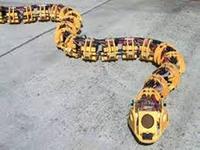-
Israel destroys another missile shipment from Syria to Hezbollah
Israeli warplanes on Friday destroyed a Syrian military convoy carrying advanced missiles to Hezbollah. The air strike was approved in a secret meeting of Prime Minister Benjamin Netanyahu’s security cabinet on Thursday night. The target of Israel’s Friday attack were remotely operated missiles, with a range of about 950 miles, which were manufactured in China and upgraded in Iran. This is the fifth Israeli attack in which shipments of advanced weapons from Assad to Hezbollah were destroyed. The earlier four attacks took place on 30 January, 3 May, 5 May, and 5 July.
-
-
U.S. worries about proliferation of drone technology
A new Amnesty International report about U.S. drone use in the war on terror says that the drone campaign is killing so many civilians, that it does not only violate international law, but may be a war crime. The report also says that the growing use of drones by the United States in Pakistan, Yemen, and Somalia encourages their use by other states and groups. The United States rejects the figures of civilian casualties cited in the Amnesty report as unreliable, and says that the research methodology the report’s authors used is deeply flawed. The United States does agree, however, that there is a reason to worry about the proliferation of drone technology. “Going forward this is a technology that we know more people will probably get access to,” a State Department spokeswoman said.
-
-
Cyber Grand Challenge for automated network security-correcting systems
What if computers had a “check engine” light that could indicate new, novel security problems? What if computers could go one step further and heal security problems before they happen? To find out, the Defense Advanced Research Projects Agency (DARPA) intends to hold the Cyber Grand Challenge (CGC) — the first-ever tournament for fully automatic network defense systems. The Challenge will see teams creating automated systems that would compete against each other to evaluate software, test for vulnerabilities, generate security patches, and apply them to protected computers on a network. The winning team in the CGC finals would receive a cash prize of $2 million, with second place earning $1 million and third place taking home $750,000.
-
-
2008 drone killing of al Shabab leader used phone info collected by NSA
Court documents filed in the case of Basaaly Moalin, a San Diego cab driver of Somali origin accused of aiding al Shabab, reveal that the 2008 killing by a CIA drone strike of al Shabab leader Aden Hashen Ayrow was aided by information collected by the NSA metadata collection program. The NSA was able to pinpoint Ayrow’s real-time location by tracking calls between him and Moalin. Lawyers for Moalin are appealing the conviction on grounds that he was unconstitutionally targeted by the NSA’s surveillance program.
-
-
MI6 asks for more spies in Afghanistan to fight terrorism after NATO withdrawal
MI6, the U.K. Secret Intelligence Service, is calling for reinforcements from other agencies in order to strengthen the U.K. intelligence presence in Afghanistan after NATO forces withdraw from the country in 2014. Intelligence analysts warn that Afghanistan will become an “intelligence vacuum” which will allow terrorists to pose an increased threat to Britain. Intelligence sources said that Britain’s intelligence agencies were already “very stretched” and focused on potential threats from Yemen and Somalia, a fact which might persuade al Qaeda to seek to exploit the lack of attention to Afghanistan.
-
-
The only effective asteroid defense: early detection – and evacuation of impact area

For the threat of meteor strikes large or small, early detection is key, and evacuation may be the only defense needed within the next 1,000 years, according to an asteroid impact expert. He says that the best investment in asteroid defense is not in weapons to deflect them, but in telescopes and surveys to find them.
-
-
Secure evidence gathering using mobile devices
At-Scene, a provider of mobile law enforcement applications and solutions, yesterday unveiled the iCrime Fighter Enterprise mobile evidence gathering solution for secure field data collection using smart phones and other mobile devices.
-
-
Police departments adopt sophisticated, cheap-to-operate surveillance technology

Advancements in surveillance technology have been adopted not only by the National Security Agency (N.S.A) or other federal intelligence agencies. Local police departments have also incorporated the latest surveillance technologies into their work, allowing them to track individuals for different purposes.
-
-
Fighting al-Shabab’s recruitment efforts in U.S. Somali community

Somali community organizations in the Minneapolis-St. Paul area are taking a proactive approach to the war against terrorist recruitment in America’s Somali community. “Given our support for the African peacekeeping mission, and the fact that the U.S. remains a top al Qaeda target, we need to get ahead of al-Shabab’s efforts to radicalize vulnerable youth,” House Foreign Affairs Committee chairman Representative Ed Royce (R-California) said in his opening remarks at the hearing on the subject earlier this month.
-
-
Iraqi war- and occupation-related death toll estimated at half a million
A scientific study calculating Iraqi deaths for almost the complete period of the U.S.-led war and subsequent occupation estimates, with 95 percent of statistical certainty, that the total excess Iraqi deaths attributable to the war through mid-2011 to be about 405,000 (“excess” death means death not related to natural causes or causes other than the war and occupation). The researchers also estimated that an additional 56,000 deaths were not counted due to migration. Including this number, their final estimate is that close to half a million people died in Iraq as a result of the war and subsequent occupation from March 2003 to June 2011.
-
-
Cell phone technology for quicker search-and-rescue operations
Avalanches and earthquakes can be highly unpredictable — and all too often deadly. Search and Rescue (SAR) operations are expensive, and somewhat limited given the current tools at their disposal. Many of these tools are highly complex, and require intense training or the deployment of specialized teams. A new project aims to address this weakness by developing cost-effective, robust, and lightweight technology that can easily be transported to an affected zone.
-
-
U.S. formulates strategy for a new Arctic landscape
U.S. national security officials have become increasingly concerned about the national security implications of an ice-free Arctic. The Arctic will become ice-free during the summer by mid-decade. In a strategy document, the Pentagon says: “Melting sea ice in the Arctic may lead to new opportunities for shipping, tourism, and resource exploration, but the increase in human activity may require a significant increase in operational capabilities in the region in order to safeguard lawful trade and travel and to prevent exploitation of new routes for smuggling and trafficking.”
-
-
Coast Guard to discuss new U.S. Arctic strategy
The future of the Arctic has become a hot topic in U.S. national security, energy, and policy circles. The Washington Homeland Security Roundtable (WHSR) has organized a forum for private-sector leaders in which Vice Admiral Peter Neffenger, deputy commandant for operations of the U.S. Coast Guard (USCG), and Captain Jon Spaner, USCG director of emerging policy, will discuss the ramifications of climate-driven changes in the Arctic for U.S. national security and maritime operations, and share insights on the role of the USCG in meeting the challenges posed by a new ocean created by rapidly melting ice.
-
-
Snake robots move quickly in confined spaces, rough terrain

Snakes usually travel by bending their bodies in the familiar S-pattern. When they are stalking prey, however, snakes can move in a straight line by expanding and contracting their bodies. This “rectilinear gait” is slow, but it is quiet and hard to detect—-a perfect way to grab that unsuspecting rodent. This “limbless locomotion” is a highly effective way for a robot to move through cluttered and confined spaces.
-
-
The Red Cross wants video games to incorporate the Geneva Convention
Approximately 600 million video-gamers worldwide may be violating the laws of war – at least virtually. For the past two years, a unit of the ICRC has been working on discouraging video game creators from allowing players to disregard the rules of war – that is, disregard the rules of war while playing a video game, not in real life — without consequences. ICRC calls for gamers to be “rewarded for respecting the law of armed conflict and there should be virtual penalties for serious violations of the law of armed conflict, in other words war crimes.”
-
More headlines
The long view
Why Was Pacific Northwest Home to So Many Serial Killers?
Ted Bundy, Gary Ridgway, George Russell, Israel Keyes, and Robert Lee Yates were serial killers who grew up in the Pacific Northwest in the shadow of smelters which spewed plumes of lead, arsenic, and cadmium into the air. As a young man, Charles Manson spent ten years at a nearby prison, where lead has seeped into the soil. The idea of a correlation between early exposure to lead and higher crime rates is not new. Fraser doesn’t explicitly support the lead-crime hypothesis, but in a nimble, haunting narrative, she argues that the connections between an unfettered pollution and violent crime warrant scrutiny.
Bookshelf: Smartphones Shape War in Hyperconnected World
The smartphone is helping to shape the conduct and representation of contemporary war. A new book argues that as an operative device, the smartphone is now “being used as a central weapon of war.”
